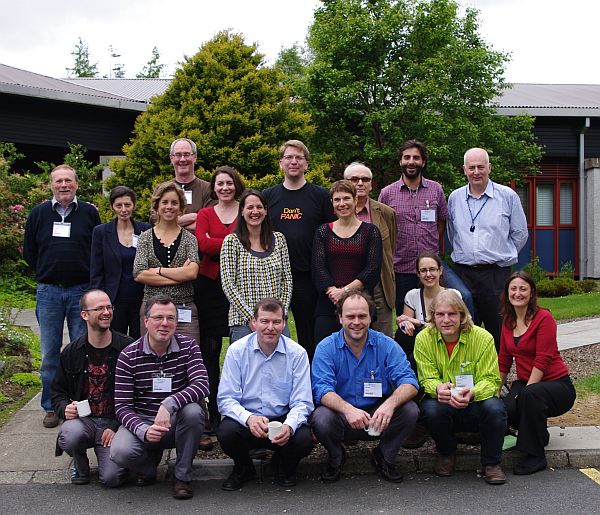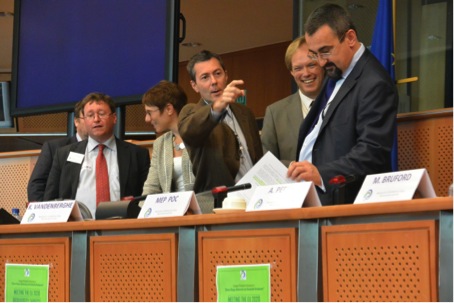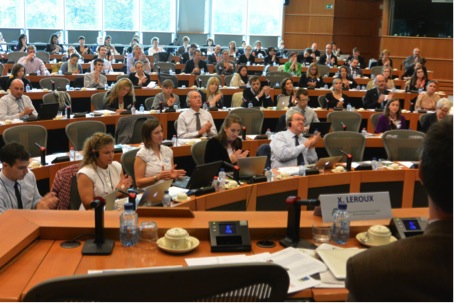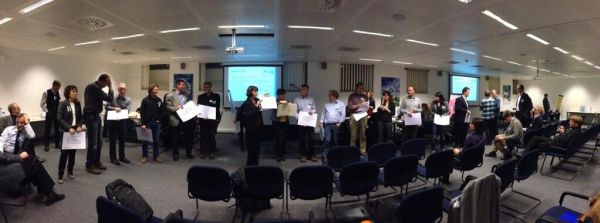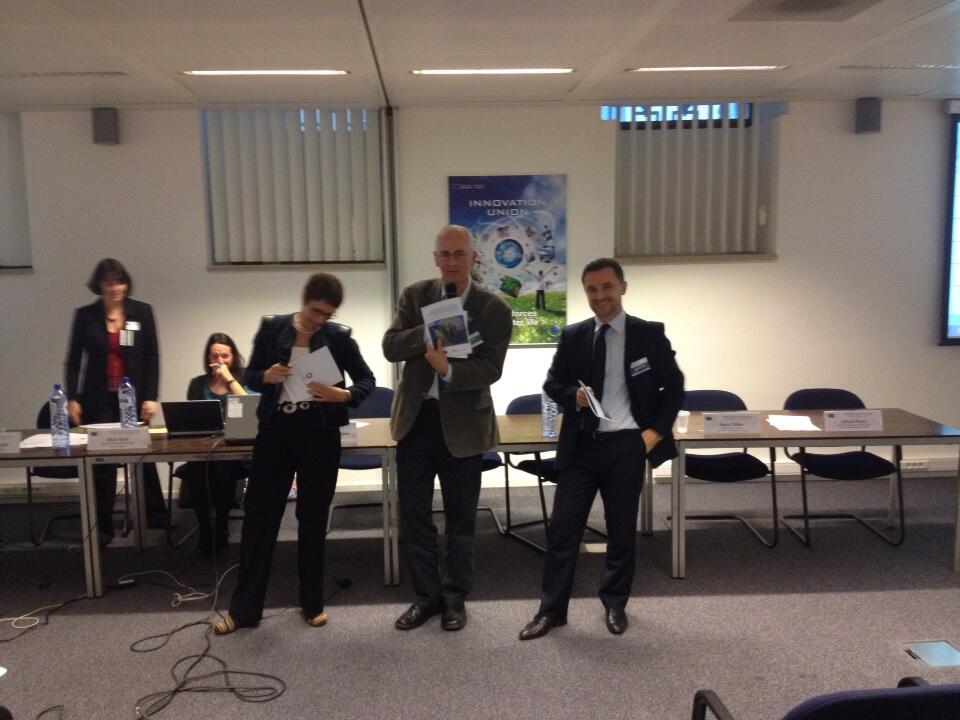News
SPIRAL "UK National Ecosystem Assessment" paper publshed
A new paper has been published based on work carried for SPIRAL, authored by Kerry Waylen and Juliette Young. This paper focuses on the first phase of the UK National Ecosystem Assessment.
Upcoming Event
No upcoming events.
Final SPIRAL Newsletter
Final SPIRAL NewsletterAt the outset of this final SPIRAL newsletter, we would like to take this opportunity to thank all contributors to SPIRAL, both inside and outside the project team. It has been a pleasure working with such motivated, hard-working and visionary colleagues. We also thank the European Commission, not only for its financial support through FP7 but also through regular and enthusiastic interactions with colleagues from the Commission and the EEA. Although the SPIRAL project ended in November 2013, we sincerely hope the SPIRAL community and products will continue to be as vibrant as over the last three years. Here’s to improved SPIs!
The SPIRAL team The complete SPI survival kitWith input not only from project partners but a host of other “spirallers”, including our network of advisers, our participants to workshops, our reviewers, interviewees and test case contributors, we have produced a number of outputs we hope will be useful to individuals, groups and institutions involved in or hoping to be involved in science-policy interfaces. All our outputs are now available on the Documents page on the SPIRAL website. Depending on what you may find relevant, outputs include:
|
||||||||||||
Events with a SPIRAL hat onIn the last months of the project, Spirallers put their SPIRAL hats on again and participated in events about science-policy interfaces.
The Spiral Hat by Spanish couturier Cristóbal Balenciaga |
||||||||||||
SPIRAL at the European Parliament
SPIRAL was invited to make a keynote presentation in the session on 'Linking biodiversity science to policy-making'. Representing SPIRAL, Sybille van den Hove talked about "Science-Policy Interfaces for Biodiversity Governance: Tools for transformation". She stressed that better functioning science-policy interfaces are necessary but not sufficient ingredients of EU biodiversity governance. Science-policy interfaces are key for issues relating to biodiversity, ecosystems and their services because such issues relate to complex social-ecological systems, where drivers operate at multiple scales (temporal, spatial, administrative, …) and multiple levels, and where unknowns, uncertainties, and unstabilised and diverse knowledge are ubiquitous. Biodiversity is also an inherently cross-sectoral issue as it is affected by, and affects, almost every aspect of human life. It cuts across policy sectors and relates to a broad set of often irreducible and incommensurable values: ethical, political, economic, social, cultural… In such context, science-policy links become crucial. Sybille then explored some pervasive myths around SPIs relating to
Going beyond these myths in practice requires a dynamic and iterative vision of co-evolution between science and policy in a landscape characterised by a multiplicity of science-policy interfaces. She concluded on the SPIRAL conviction that science-policy interfaces are potent levers of transformation towards sustainability.
Interfacing at the EP meeting. From left to right: Thomas Brooks, Head of Science and Knowledge, IUCN; Sybille van den Hove, co-coordinator of SPIRAL; Xavier Leroux, coordinator of BiodivERsA 2; Kurt Vandenberghe, Director 'Environment', European Commission DG RTD; and Pavel Poc, Member of the European Parliament.
The audience
|
||||||||||||
SPIRAL support for European Commission workshop on science and policySPIRAL provided support to the European Commission Directorate General Research and Innovation, Environment Directorate, Unit of Management of Natural Resources to organize a workshop on “Biodiversity and Ecosystem Services: a strategic dialogue between science and policy” which took place in Brussels on 14-15 November, 2013. This workshop aimed to explore how EU-funded research projects could improve their science-policy interfaces and enhance their role and contribution to policy development and implementation in the current policy context (within and beyond the environmental sector). The first day focused on initiating the dialogue between project delegates and policy makers making use of policy briefs developed by projects to address some policy questions identified by policy makers from various sectors. Participatory sessions allowed for exchanges and increased the understanding of both sides: policy needs and requirements and research framework and constraints.
Discussion outputs consisted of recommendations for improving communication products and other SPI activities. Soft outcomes are also expected from the workshop as participants had the opportunity to meet, exchange, express their interests and build trust. The second day allowed EU-funded research projects to explore areas of possible collaboration to increase synergies and avoid duplication of efforts especially when designing SPI activities such as common workshops or awareness-raising events. Other areas of collaboration related to data collection and archiving, and to the possible use of common IT platforms. The evaluation of the workshop was positive and several participants expressed their interest to see this kind of workshop organised on a regular basis. The event also marked the launch of the SPIRAL handbook!
|
||||||||||||
Life beyond SPIRALAs we reach the end of the SPIRAL project, it is important to look forward towards the challenges that remain and the opportunities that SPIRAL has created to help meet these changes. We highlight three areas of future activity: further strengthening the biodiversity science-policy interfaces, development beyond the biodiversity sector, and training. Further challenges in the biodiversity science-policy interface Although many lessons have been learnt and shared during the SPIRAL project, there remains an enormous amount of work to do to achieve effective engagement between science, policy and society. The steps now being taken by IPBES are enormously encouraging but the size of the challenge that IPBES faces should not be underestimated. More generally, the need for much greater engagement between science and policy has become clear over the life of the SPIRAL project. We hope that the resources made available by SPIRAL will help this process but believe that in order to achieve effective action in conserving biodiversity, sustainably using our natural resources and developing nature-based solutions for society’s challenges, a step-change – from interface to alliance – between science, policy and society is needed. Strengthening the SPIRAL approach beyond biodiversity issues SPIRAL was developed to improve science-policy interfaces for the conservation and sustainable use of biodiversity. However, most of the lessons learned from SPIRAL are applicable in other policy contexts. In addition, whilst SPIRAL has benefitted from interactions with functioning SPI test cases, there are still valuable insights to be gained from other fields, including science-business-policy-society interactions or any combination thereof. Post-SPIRAL work could focus on activities to strengthen the SPIRAL approach beyond biodiversity, including:
Training in Science-Policy Interfaces SPIRAL has supported the development of the AfriBES network. Further expansion through training could include:
More generally, options for capacity building could include:
We hope the work of SPIRAL has been and continues to be of use. Certainly we have learned a great deal over the last 3 years and have enjoyed working with you all. All the best for all your SPI endeavours, The SPIRAL team. |


